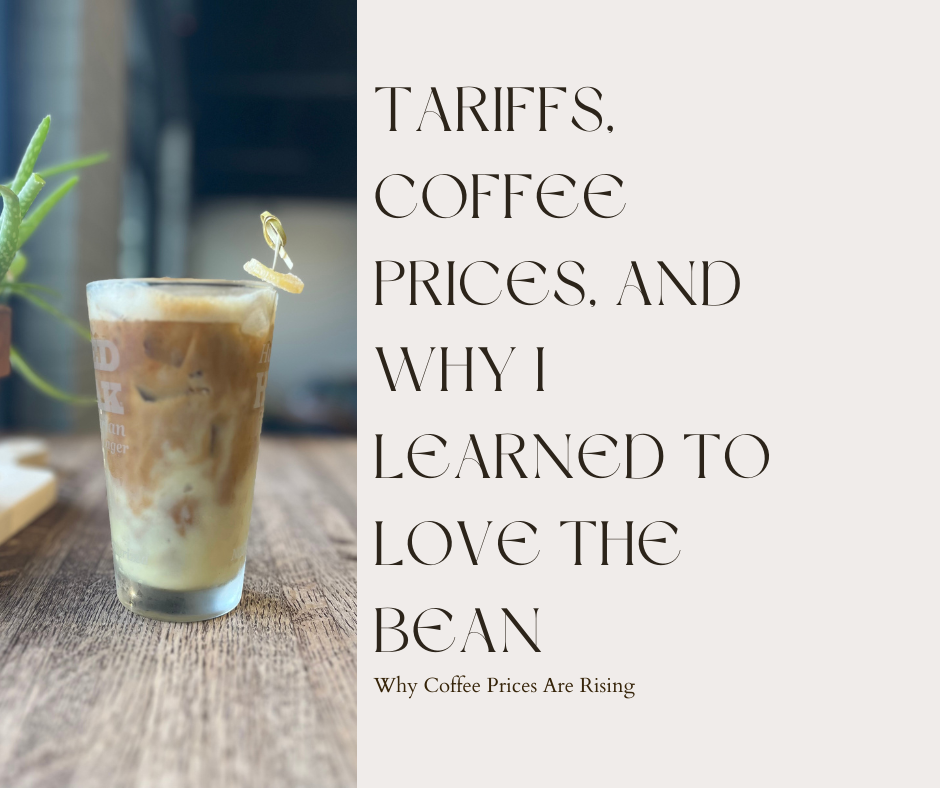Coffee prices are rising again, sending coffee roasters and retailers(like us) into a new era of coffee prices like we have never experienced before. In some cases, coffee prices have risen as much as 100%. Over the last year, these changes have rocked the global coffee market, touching everyone from major retailers of commodity coffee to the finest specialty coffee purveyors.
In this blog, we will explore some of the reasons for these changes and how we, as a company, will address these price hikes for our community.
Coffee As A Commodity in Flux

Coffee is one of the biggest agricultural products in the world. In the US alone, the economic impact of coffee was 343 billion dollars in 2022. That is a BILLION with a B. This is huge, and anytime there are sweeping changes across the industry, it is felt worldwide. Coffee is also directly impacted by our changing climate.
Since last October, the futures price of coffee has jumped from $2.42 per lb to over $4 a lb.
How Climate Change Has Impacted Coffee
Over the past two years, climate change has emerged as one of the most serious threats to global coffee production. What used to be a reliable agricultural staple is now facing unpredictable growing seasons, lower yields, and skyrocketing prices—all driven by extreme weather patterns and shifting environmental conditions.
-
Droughts, Heat, and Crop Loss
In Brazil, the world’s leading producer of Arabica coffee, back-to-back droughts and intense heat waves have severely reduced output. Some regions, like Alta Mogiana, saw harvests shrink by more than two-thirds, with entire crops lost. As a result, Arabica prices spiked dramatically, reaching up to $7 per pound in the U.S.—a stark reminder of how vulnerable even the most established coffee regions are to climate extremes.
Meanwhile, Vietnam, which produces the majority of the world’s Robusta beans, has also faced major disruptions. The 2023/24 season brought prolonged dry conditions, reducing output by 20%. This drop in supply drove Robusta futures prices up by more than 50%, directly impacting the cost of instant coffee and blends worldwide.
-
El Niño and Unpredictable Weather
The recent El Niño event further complicated matters. In Brazil, instead of the anticipated production rebound, coffee yields declined by 1.6% due to erratic rainfall and higher-than-average temperatures. Indones ia experienced a similar blow—excessive rains damaged coffee cherries, resulting in a 16.5% year-on-year production drop. Globally, coffee prices surged nearly 40% in 2024 alone, with Arabica and Robusta prices increasing by 58% and 70%, respectively.
-
Pests, Diseases, and Growing Pressures
Rising temperatures have also expanded the range of pests and diseases that affect coffee plants. The Coffee Leaf Rust fungus and Coffee Berry Borer beetle are thriving in the warmer climate, causing widespread crop losses in Central America, Ethiopia, and other key coffee-growing regions. Many farmers are now being forced to consider switching from traditional Arabica to hardier, less flavorful species—or abandoning coffee altogether.
Tariffs Add Another Layer of Pressure
In addition to climate-related challenges, trade policies and tariffs have increasingly contributed to the rising cost of coffee. Over the last year, new tariffs and regulatory fees have been implemented by the US, leading to shifting trade dynamics and economic uncertainty. In some cases, these tariffs have hit 30%(not including the 10% flat tariff). These added costs are passed directly down the supply chain to roasters, cafés, and ultimately consumers.
For example, increased tariffs on agricultural imports to the US have made it more expensive for companies to source beans from traditional suppliers from countries such as Brazil and Vietnam, both of which provide the vast majority of commodity coffee to the US. This has forced green coffee buyers to look elsewhere for coffee, which drives up the demand in smaller producing countries.
So… What Do We Do?
We keep on doing what we do! Sourcing great quality coffee from producers that we believe in. Yes, as coffee gets more expensive, our prices will have to rise. However, as we continue to grow our direct trade offerings and work more closely with our importers, we can ensure that the coffees that we offer are bought at prices that reflect the value that producers bring to the table.

Because of where coffee is grown, many producers and workers have been shortchanged. Coffee, including specialty coffee, is often thought of as an affordable luxury. While I believe that coffee should be accessible to all, the prices should also reflect the value of every step in the supply chain, especially at the farm level.
So, going forward, we will continue to remain committed to our mission of bringing ethically sourced specialty coffee to our community, but we will also begin to explore more ways to showcase the heart of each coffee that we bring in, as well as push for more transparency for each of our offerings!
All in all, support your local cafes, coffee roasters, bakeries etc, we need it now more than ever.

